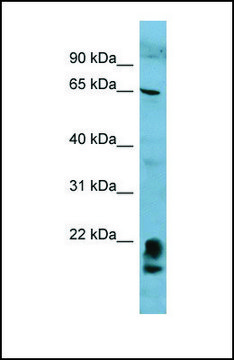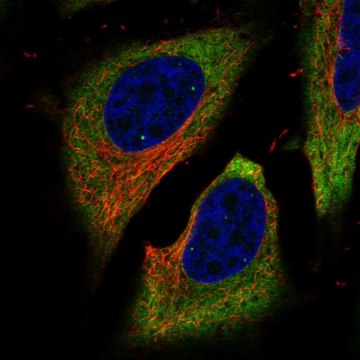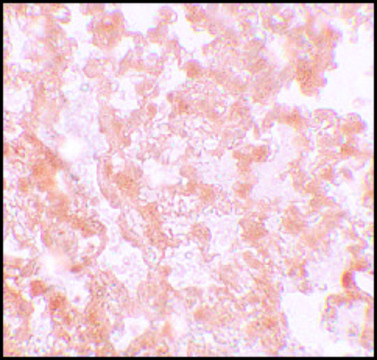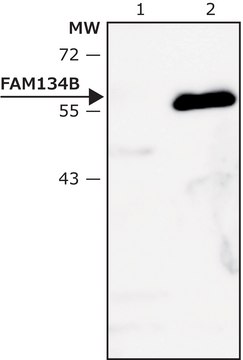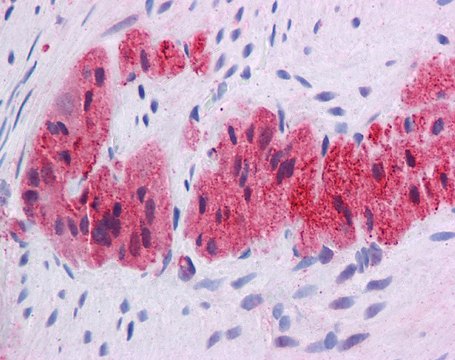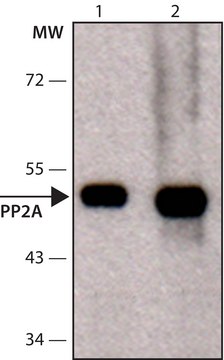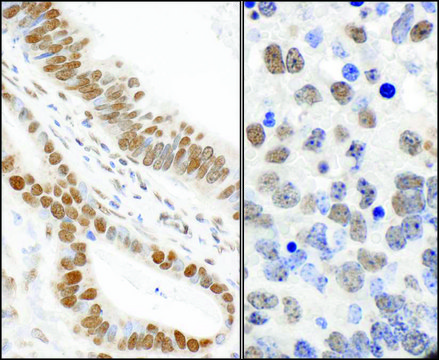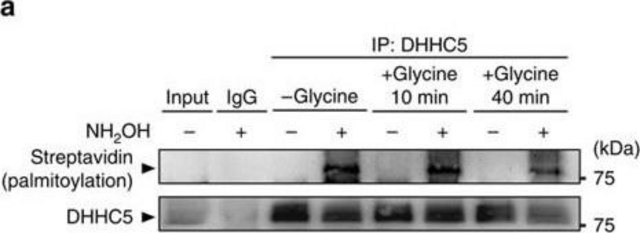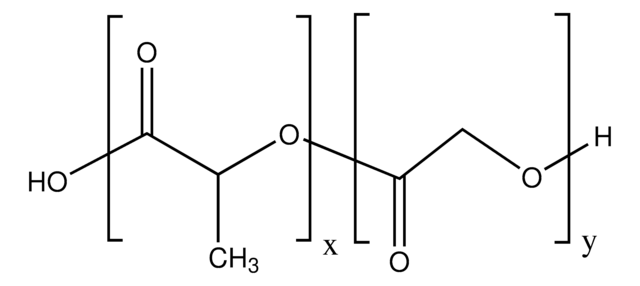SAB4200847
Anti-FAM134B antibody produced in rabbit
affinity isolated antibody, buffered aqueous solution
Sign Into View Organizational & Contract Pricing
All Photos(3)
Synonym(s):
JK1, RETREG1, reticulophagy regulator 1
UNSPSC Code:
12352203
NACRES:
NA.41
Recommended Products
antibody form
affinity isolated antibody
Quality Level
species reactivity
human
concentration
~1 mg/mL
technique(s)
indirect immunofluorescence: 1:500-1:1000 using cultured human Hela Cells
western blot: 1:500-1:1000 using 293T Cells Exp.FAM134B
UniProt accession no.
shipped in
dry ice
storage temp.
−20°C
target post-translational modification
unmodified
General description
Five endoplasmic reticulum (ER)-resident proteins have been shown to function as receptors for selective ER-phagy: FAM134B, SEC62, RTN3, CCPG1 and ATL3.1-2 These integral membrane proteins appear to partition into different sub-domains of the ER. All of them harbor a sequential peptide motif within the cytoplasmic region, enabling binding to LC3/GABARAP proteins associated with phagophore membrane.1 FAM134B (also known as RETREG1 or JK-1) is the first ER-phagy receptor to be identified.2
Specificity
Anti-FAM134B antibody specifically recognizes an epitope on human FAM134B cytoplasmic domain.
Application
The antibody may be used in various immunochemical techniques including Immunoblotting (may appear as two isoforms ~55 kDa and ~40 kDa) and Immunofluorescence. Detection of the FAM134B band by Immunoblotting is specifically inhibited by the immunogen.
Biochem/physiol Actions
The protein was discovered to be involved in the pathogenesis of esophageal squamous cell carcinoma (ESCC).3-4 Loss of function mutations in FAM134B result in severe sensory and autonomic neuropathy (HSANII).5 In addition, FAM134B has been classified as an intra-membrane ER-resident protein that is characterized by the presence of a reticulon homology domain (RHD) and that is mainly located at the edges of the ER sheets.1,6 In research, FAM134B is implicated in the suppression of viral replication during Ebola, Dengue, Zika and West Nile viral infections.7-8 Non-structural viral proteases such as NS2S3 specifically cleave FAM134B, thereby subverting ER-phagy.7 Specific mutations in FAM134B and expression profiles are strongly correlated with colorectal cancers.9 Increased expression of FAM134B is also implicated with susceptibility to vascular dementia and allergic rhinitis.9-10
Physical form
Supplied as a solution in 0.01 M phosphate buffered saline pH 7.4, containing 15 mM sodium azide as a preservative.
Storage and Stability
For continuous use, store at 2-8°C for up to one month. For extended storage, freeze in working aliquots. Repeated freezing and thawing is not recommended. If slight turbidity occurs upon prolonged storage, clarify the solution by centrifugation before use. Working dilution samples should be discarded if not used within 12 hours.
Disclaimer
Unless otherwise stated in our catalog our products are intended for research use only and are not to be used for any other purpose, which includes but is not limited to, unauthorized commercial uses, in vitro diagnostic uses, ex vivo or in vivo therapeutic uses or any type of consumption or application to humans or animals.
WGK
WGK 1
Flash Point(F)
Not applicable
Flash Point(C)
Not applicable
Regulatory Information
常规特殊物品
Certificates of Analysis (COA)
Search for Certificates of Analysis (COA) by entering the products Lot/Batch Number. Lot and Batch Numbers can be found on a product’s label following the words ‘Lot’ or ‘Batch’.
Already Own This Product?
Find documentation for the products that you have recently purchased in the Document Library.
J C Tang et al.
Clinical cancer research : an official journal of the American Association for Cancer Research, 7(6), 1539-1545 (2001-06-19)
In this study, we screened 19 esophageal squamous cell carcinomas (ESCCs) for the detection of genetic alterations using inter-simple sequence repeat PCR, a DNA fingerprinting approach. Three simple repetitive unanchored primers representing tri- and tetranucleotide repeats [(GTG)(5), (GACA)(4), and (GATA)(4)]
Nicholas J Lennemann et al.
Autophagy, 13(2), 322-332 (2017-01-20)
The endoplasmic reticulum (ER) is exploited by several diverse viruses during their infectious life cycles. Flaviviruses, including dengue virus (DENV) and Zika virus (ZIKV), utilize the ER as a source of membranes to establish their replication organelles and to facilitate
Paolo Grumati et al.
Journal of cell science, 131(17) (2018-09-05)
Selective autophagy represents the major quality control mechanism that ensures proper turnover of exhausted or harmful organelles, among them the endoplasmic reticulum (ER), which is fragmented and delivered to the lysosome for degradation via a specific type of autophagy called
Wing K Tang et al.
International journal of molecular medicine, 19(6), 915-923 (2007-05-10)
Esophageal squamous cell carcinoma (ESCC) shows high frequency and mortality in Asian regions, including China. Previous analysis of genomic DNA of ESCC using comparative genomic hybridization indicated that amplification of the chromosome 5p regions is a common event in ESCC
Aliaksandr Khaminets et al.
Nature, 522(7556), 354-358 (2015-06-05)
The endoplasmic reticulum (ER) is the largest intracellular endomembrane system, enabling protein and lipid synthesis, ion homeostasis, quality control of newly synthesized proteins and organelle communication. Constant ER turnover and modulation is needed to meet different cellular requirements and autophagy
Our team of scientists has experience in all areas of research including Life Science, Material Science, Chemical Synthesis, Chromatography, Analytical and many others.
Contact Technical Service